Rakta Chamundi
God’s Own Country, Kerala has always been a muse for me, for many reasons.
Beyond blue waters, sprawling coconut groves and calm backwaters, there’s so much more to life in this mystic land that inspires an artist.
A visit to a friend’s ancestral house at Thaiparamba, Kannur for ‘Theyyam’, the art of Dancing Gods opened new doors to imagination for me.
Anyone who knows about this performance arts would have heard it’s the Gods themselves coming down to earth. And anyone who has witnessed it first-hand would believe it to be true. Such is the sanctity that goes into the preparations and the performance. And no performance is more surreal than Theyyam.
Theyyam flourishes in small temples and Kaavus. They are performed in and around shrines without a stage. The Kaavu, located in shady groves, rich with local plants and herbs, where the Goddesses and the Nagas (serpant Gods) are worshipped. This kavu was a bit different with brick wall and a grid of oil lamps adorned the outside walls of the kshetram. The mood was festive. It is a three day affair that transforms the place into a fair of sorts.
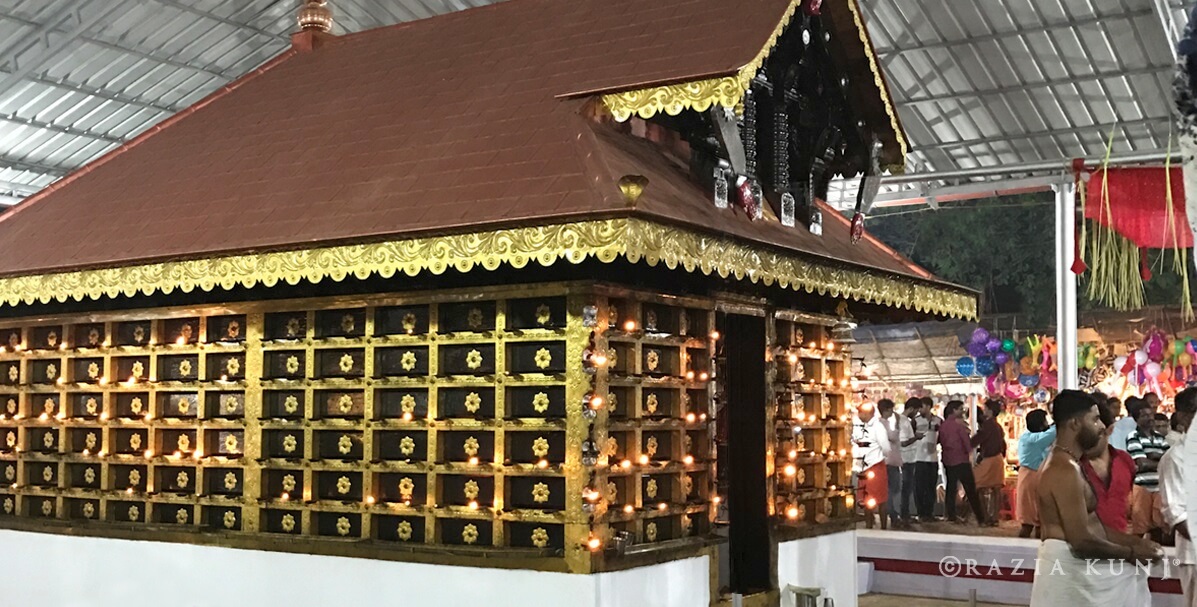

The right to perform is restricted to 3 main communities, The Malayans, Vannan and Velan. The beauty of this performance is the coming together of classicism of the upper caste and the lower caste. Theyyam is a beautiful act of preserving an age old ritual and keeping the souls of ancestors and gods happy.
This performance that I witnessed is called ‘Rakta Chamundi’ that represents the ferrocious one. The slayer of Mahishasura, Chamundi is suppose to have drank the blood of the demon to protet it from spilling and thereby allowing him many more lives.
The theyyam ritual begins with the singing of the ‘Thottams’ that are verses that narrate the myths, legends, significance and the origin of Theyyam.
Supported by the high pitch music, the rhythmic beats of the percussion, the dance, the bright colours, exaggerated forms, the warmth of the embers burning in the pit and the fragrance of coconut oil lamps.
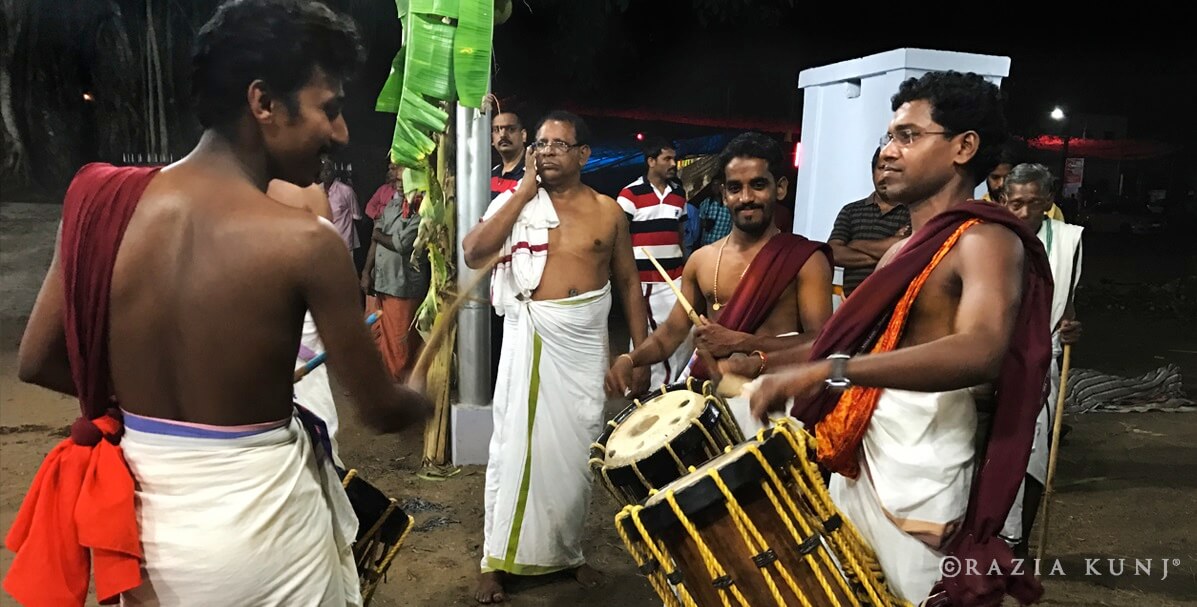

The right to perform is restricted to 3 main communities, The Malayans, Vannan and Velan. The beauty of this performance is the coming together of classicism of the upper caste and the lower caste. Theyyam is a beautiful act of preserving an age old ritual and keeping the souls of ancestors and gods happy.
This performance that I witnessed is called ‘Rakta Chamundi’ that represents the ferrocious one. The slayer of Mahishasura, Chamundi is suppose to have drank the blood of the demon to protet it from spilling and thereby allowing him many more lives.
The theyyam ritual begins with the singing of the ‘Thottams’ that are verses that narrate the myths, legends, significance and the origin of Theyyam.
Supported by the high pitch music, the rhythmic beats of the percussion, the dance, the bright colours, exaggerated forms, the warmth of the embers burning in the pit and the fragrance of coconut oil lamps.
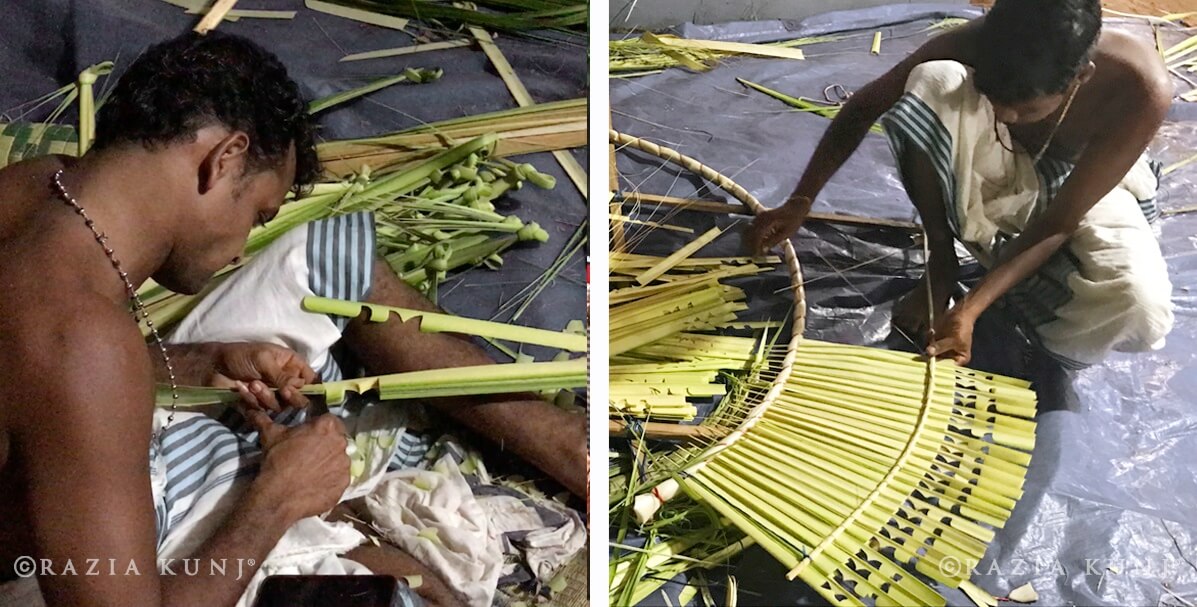

The face painting and dress varies according to the deity represented. The colours and the brushes are drawn directly from nature. Turmeric yellow, red of vermillion, white from rice paste and lamp black completes the Theyyam palette. The vibrant red against the black canvas of the night creates a stark contrast and aura which is surreal.
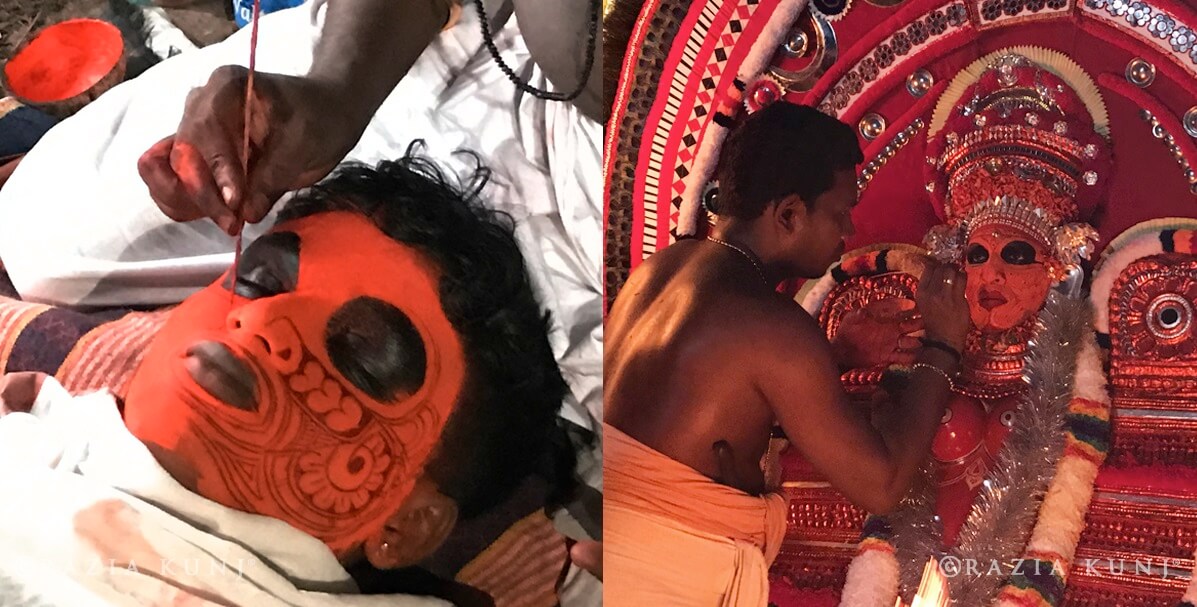

The ornaments are mostly made of brass silver or gold. The ‘Thalapali’ ornament worn on the forehead of the performer has 21 dangling bells that represent the 21 gurus or teachers who have contributed to the evolution of the form. After some ritual the performer will touch the Thalapali with both hands and place them on his forehead, he is actually taking blessings from all those 21 Gurus.
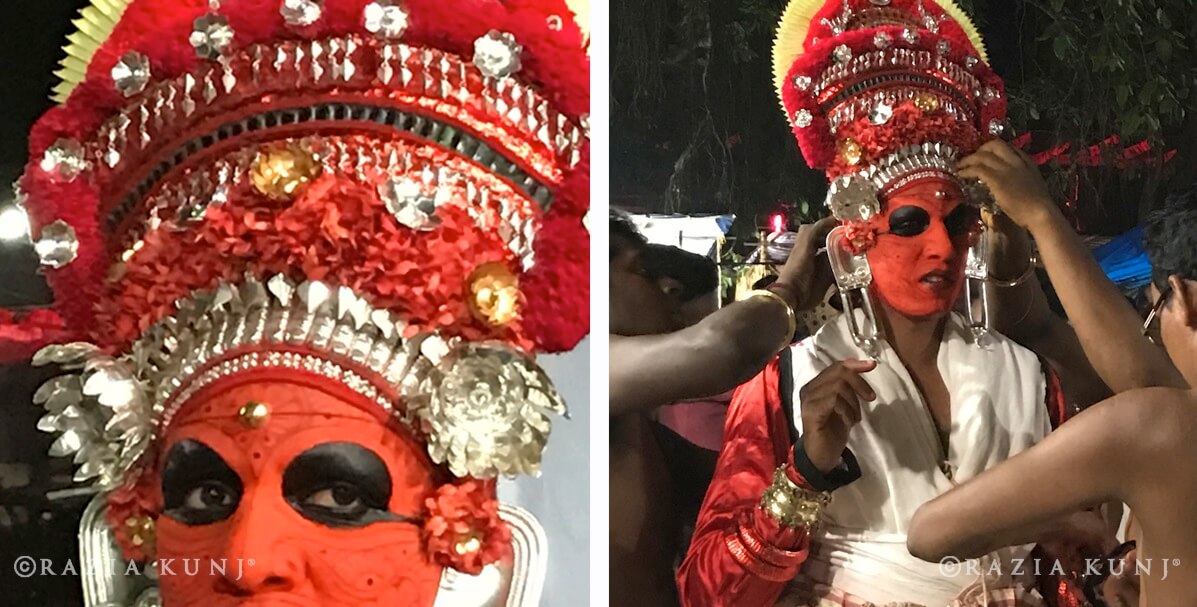

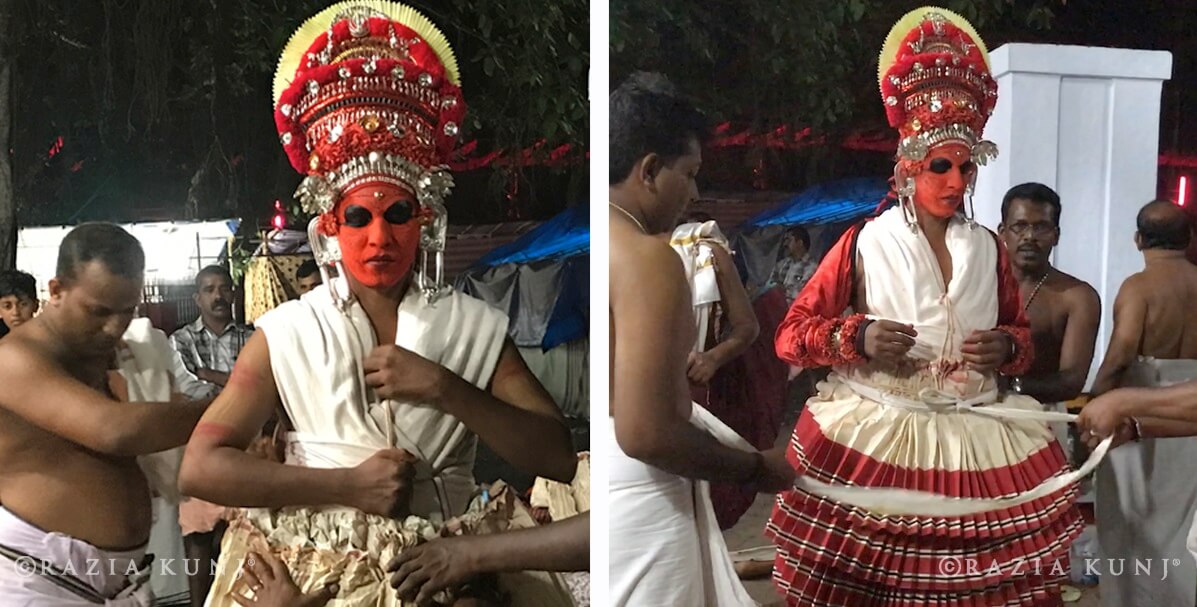

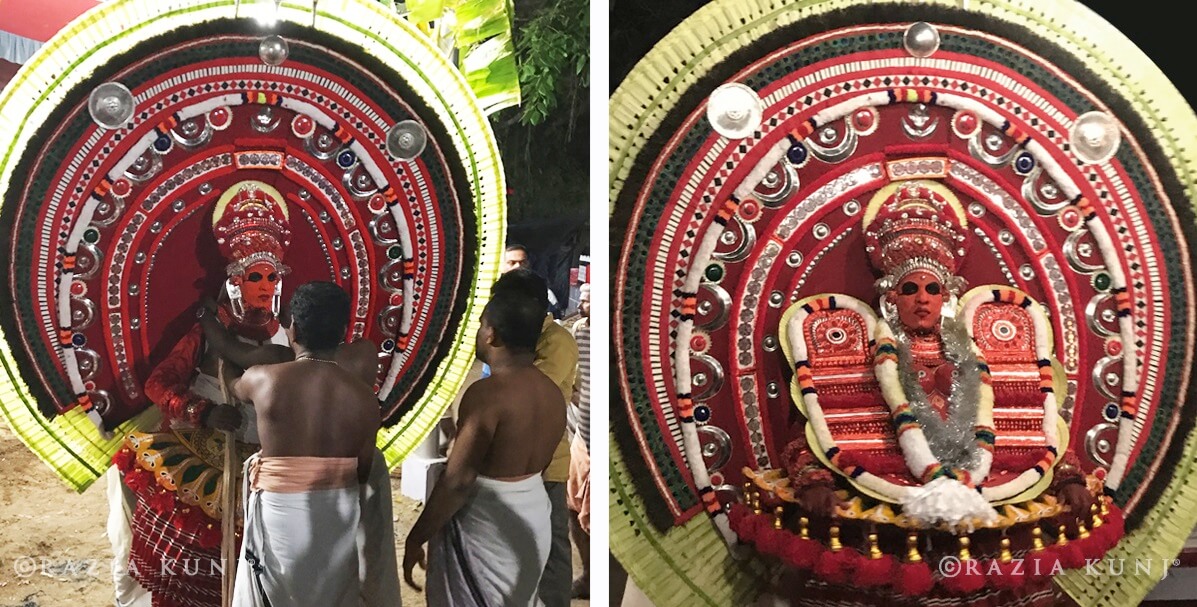

Its this magical surrealism that I have tried to capture in my Theyyam collection. The masks, the body painting, the headgears… the Gods come alive in every detail. Having conversed with the members of the communities that are privileged to perform Theyyam, I wanted to evoke the same sense of devotion that they have for their art, through mine.
There said to be almost 100 forms of Theyyam, so it’s difficult to capture an art of such magnificence and magnitude in all its glory. But through my art which is a riot of colours, along with patterns of folk art, and traditional design forms I’ve tried to do justice to the unassuming charm of Theyyam.
Each piece of hand painted Jewelry is painstakingly created with absolute perseverance over two to three days. Given that the Theyyam performers take three days for preparations, it’s only fair that its jewellery adaptations take the same amount of time in the making.
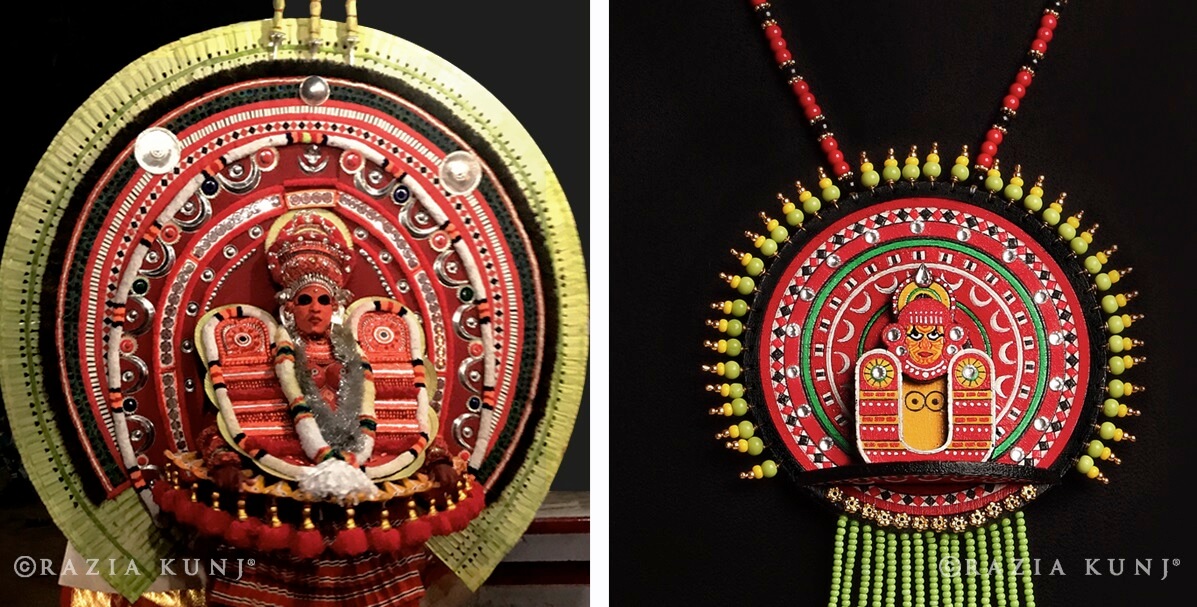

Hand-painted and handcrafted jewelry by artists on layered wood, embellished with gold finish brass and swarovski crystals, strung together by tulsi beads by the traditional community of Patwas, shop this unique handcrafted unisex jewelry collection online:
Theyyam Broches & Buttons, Theyyam Necklaces, Theyyam Earrings Theyyam Rings, Theyyam Bangles.

